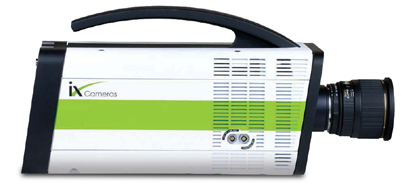
如何使用科學(xué)相機(jī)進(jìn)行數(shù)字孿生在海洋中的應(yīng)用
With the advancement of technology, scientists have been able to explore the mysteries of the ocean like never before. One significant tool that has aided in this endeavor is the scientific camera. These cameras have revolutionized marine research by allowing scientists to capture stunning images and videos of underwater environments. Moreover, they have played a crucial role in the application of digital twinning, a powerful concept that has helped scientists gain a deeper understanding of the ocean. In this article, we will explore the various applications of scientific cameras in digital twinning in the marine environment.
Scientific cameras have proven to be highly effective in surveying marine biodiversity. By capturing high-resolution images and videos, scientists can create accurate digital replicas of marine ecosystems. These digital twins provide invaluable information about the distribution and health of various species, allowing scientists to track changes over time. For instance, a study conducted by marine biologists in the Pacific Ocean utilized scientific cameras to create a digital twin of a coral reef. The detailed imagery revealed the bleaching of coral caused by rising water temperatures, aiding in conservation efforts.
In addition to biodiversity surveying, scientific cameras have proven instrumental in studying underwater geological formations. By capturing images and videos of the seafloor, scientists can create digital twins that help to identify potential hazards, such as underwater landslides or volcanic eruptions. Furthermore, these digital replicas assist in modeling and predicting geological processes, which is essential for understanding the long-term effects on marine ecosystems. The data obtained can potentially be used to mitigate the impact of such events on coastal communities.
Scientific cameras have also facilitated the study of marine life behavior. By capturing detailed footage of various species, scientists can closely analyze their interactions and behavior patterns. For instance, researchers in the Arctic were able to use scientific cameras to observe the hunting behavior of elusive species such as the polar bear. This helped them understand the effects of climate change on the feeding habits and survival rates of these animals. These observations provide crucial insights into the impacts of environmental changes on marine life.
Furthermore, scientific cameras have been utilized to explore the effects of human activities on the marine environment. By capturing images and videos of underwater structures such as oil rigs or pollution sources, scientists can gain a comprehensive understanding of the impact of these activities on marine ecosystems. These digital twins act as a valuable tool for policymakers and environmental organizations in making informed decisions regarding resource management and conservation.
In conclusion, scientific cameras have revolutionized the study of the ocean through their application in digital twinning. They have enabled the creation of accurate replicas of underwater environments, aiding in various studies such as biodiversity surveying, geological analysis, behavior observation, and the assessment of human impacts. By harnessing the power of scientific cameras, scientists can delve deeper into the mysteries of the ocean and contribute to the conservation and understanding of this vast and essential ecosystem.









-60.png)
-17.png)
-70.png)
-29.png)
-79.png)
-49.png)
-106.png)
-85.png)




-113-1.png)


-108.png)





